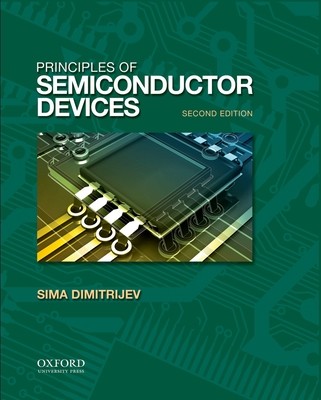
- We will send in 10–14 business days.
- Author: Sima Dimitrijev
- Publisher: Oxford University Press, USA
- ISBN-10: 0195388038
- ISBN-13: 9780195388039
- Format: 19.1 x 23.6 x 2.8 cm, kieti viršeliai
- Language: English
- SAVE -10% with code: EXTRA
Reviews
Description
The dimensions of modern semiconductor devices are reduced to the point where classical semiconductor theory, including the concepts of continuous particle concentration and continuous current, becomes questionable. Further questions relate to two-dimensional transport in the most important field-effect devices and one-dimensional transport in nanowires and carbon nanotubes.
Designed for upper-level undergraduate and graduate courses, Principles of Semiconductor Devices, Second Edition, presents the semiconductor-physics and device principles in a way that upgrades classical semiconductor theory and enables proper interpretations of numerous quantum effects in modern devices. The semiconductor theory is directly linked to practical applications, including the links to the SPICE models and parameters that are commonly used during circuit design. The text is divided into three parts: Part I explains semiconductor physics; Part II presents the principles of operation and modeling of the fundamental junctions and transistors; and Part III provides supplementary topics, including a dedicated chapter on the physics of nanoscale devices, description of the SPICE models and equivalent circuits that are needed for circuit design, introductions to the most important specific devices (photonic devices, JFETs and MESFETs, negative-resistance diodes, and power devices), and an overview of integrated-circuit technologies. The chapters and the sections in each chapter are organized so as to enable instructors to select more rigorous and design-related topics as they see fit.EXTRA 10 % discount with code: EXTRA
The promotion ends in 23d.02:27:30
The discount code is valid when purchasing from 10 €. Discounts do not stack.
- Author: Sima Dimitrijev
- Publisher: Oxford University Press, USA
- ISBN-10: 0195388038
- ISBN-13: 9780195388039
- Format: 19.1 x 23.6 x 2.8 cm, kieti viršeliai
- Language: English English
The dimensions of modern semiconductor devices are reduced to the point where classical semiconductor theory, including the concepts of continuous particle concentration and continuous current, becomes questionable. Further questions relate to two-dimensional transport in the most important field-effect devices and one-dimensional transport in nanowires and carbon nanotubes.
Designed for upper-level undergraduate and graduate courses, Principles of Semiconductor Devices, Second Edition, presents the semiconductor-physics and device principles in a way that upgrades classical semiconductor theory and enables proper interpretations of numerous quantum effects in modern devices. The semiconductor theory is directly linked to practical applications, including the links to the SPICE models and parameters that are commonly used during circuit design. The text is divided into three parts: Part I explains semiconductor physics; Part II presents the principles of operation and modeling of the fundamental junctions and transistors; and Part III provides supplementary topics, including a dedicated chapter on the physics of nanoscale devices, description of the SPICE models and equivalent circuits that are needed for circuit design, introductions to the most important specific devices (photonic devices, JFETs and MESFETs, negative-resistance diodes, and power devices), and an overview of integrated-circuit technologies. The chapters and the sections in each chapter are organized so as to enable instructors to select more rigorous and design-related topics as they see fit.

Reviews